What is Keyword Clustering?
Keyword clustering is the practice of including multiple keywords with similar Suchabsicht in a single piece of content. It is intended to improve SEO by addressing related search queries within one comprehensive piece of content.
For example, ‘homemade vanilla cake’ and ‘vanilla cake recipe’ are different Schlüsselwörter. However, they have the same search intent and are used by searchers who seek content on making vanilla cakes in their homes.
Google also understands this and even returns similar search results for both search queries:

So, a recipe blogger looking to rank for both keywords could create a single content and optimize it for ‘homemade vanilla cake’ and ‘vanilla cake recipe’. That way, their content can rank for both keywords.
Why Keyword Clustering Improves SEO
Keyword clustering takes advantage of Bert (short for Bidirectional Encoder Representations from Transformers), the artificial intelligence language model that Google uses to understand a user’s search intent.
Before BERT, Google analyzed the keywords in a search query and returned with content that closely matched that keyword. This typically resulted in Google displaying different webpages for searches with the same intent.
However, with BERT, Google now analyzes all the words in the search query to understand their context. This allows Google to uncover the visitor’s search intent.
In return, Google displays webpages that represent the searcher’s search intent rather than pages that just happen to contain the keywords the searcher searched for.
Benefits of Keyword Clustering
Keyword clustering is an effective strategy for getting organischer Verkehr from search results pages. It is an important part of Stichwortforschung, and some even consider it the future of SEO. It provides SEOs and bloggers with a series of benefits, including:
1 Allows Content Rank for Multiple Keywords
Content created using keyword clustering can rank for hundreds or even thousands of keywords. The only condition is that it matches the user’s search intent.
This is good news for bloggers as it increases their chances of getting organic traffic to their content. It also saves them the effort of creating and managing multiple pieces of content, as they only create one and optimize it for multiple keywords.
2 Helps to Prevent Keyword Cannibalization
Keyword cannibalization occurs when multiple webpages rank for the same keyword and search intent. This typically results in the affected content ranking poorly on search results pages.
Keyword clustering reduces the chances of keyword cannibalization, as a single piece of content will include the keywords that would have been used to create or optimize a similar piece of content.
3 Helps Uncover the Search Intent of a Content
Keyword clustering is done during the Stichwortforschung process. At this point, a blogger reviews their keywords and analyzes and merges those with the same search intent.
This guides the direction of the article. Bloggers also pay attention to understanding the intent of the content as it is the basis on which keyword clusters are formed.
4 Helps to Uncover Secondary Keywords for a Content
Keyword clustering allows bloggers to uncover secondary keywords, subtopics, headings, and frequently asked questions to include in their content.
Without keyword clustering, bloggers would either not have uncovered the keywords or may have included them in standalone content that may end up competing with other articles.
5 Increases the Search Volume of a Keyword
Search volume is one of the significant metrics bloggers consider when deciding what keyword to rank for. However, some keywords may not have sufficient search volume to justify dedicating an entire article to them.
In this case, a blogger could include multiple keywords with low search volume in a cluster. That way, they can end up with content with multiple keywords and considerable search volume.
6 Helps to Prevent Keyword Stuffing
Creating a thousand or two-thousand-word article targeting one or two single keywords can easily lead to keyword stuffing. This is a situation wherein you keep repeating keywords in content.
Keyword stuffing is a black hat SEO technique and can cause Google to demote your rankings. However, keyword clustering will allow you to uncover many other keywords to include in your article.
How to Perform Keyword Clustering
Keyword clustering is performed during the keyword research process. Instead of performing regular keyword research to find a few keywords to include in a piece of content, you will do some extra work to uncover related keywords.
These keywords are variations, synonyms, long-tail, medium-tail, and short-tail versions of the keywords you discovered during keyword research. Once done, you will include these keywords in the same content.
1 Generate a List of Keywords
The first step is to generate a list of keywords for which you want to rank. This is called keyword research, and if you are unfamiliar with it, you can follow this guide to understand how to perform keyword research.
You will require a dedicated keyword research tool for this step. Paid tools will give you more functionality. However, if you cannot access one, consider using these free keyword research tools. Du kannst auch use Rank Math und das Verwandte Suchanfragen of Google search results to generate additional keywords.
Your goal is to discover as many keywords as possible. So, it is perfectly normal if you end up with hundreds or even thousands of keywords in this process.
You should also pay attention to the keyword difficulty, search volume, and cost per click of the keywords you discover, as they are crucial to determining the most relevant keywords to rank for.
2 Group the Keywords by Their Search Intent
Using Rank Math PRO, head to WordPress dashboard → Rank Math SEO → Allgemeine Einstellungen.
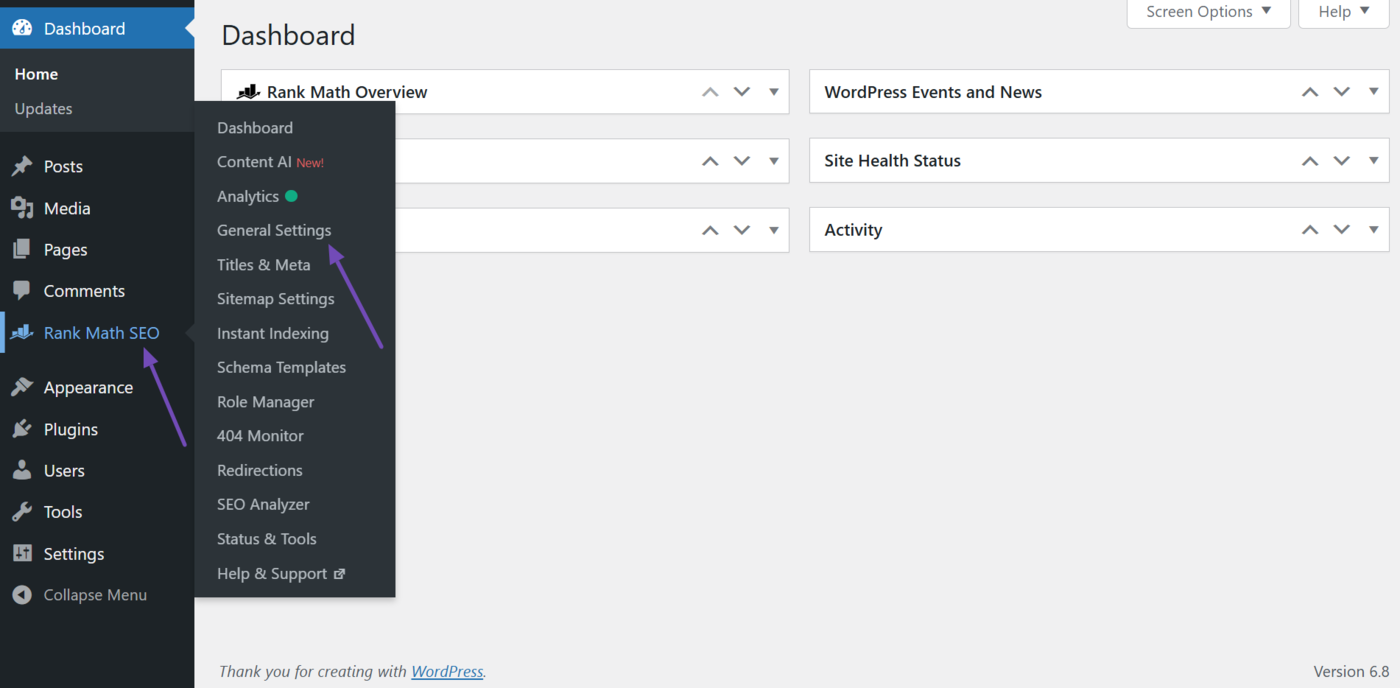
Next, click Others.
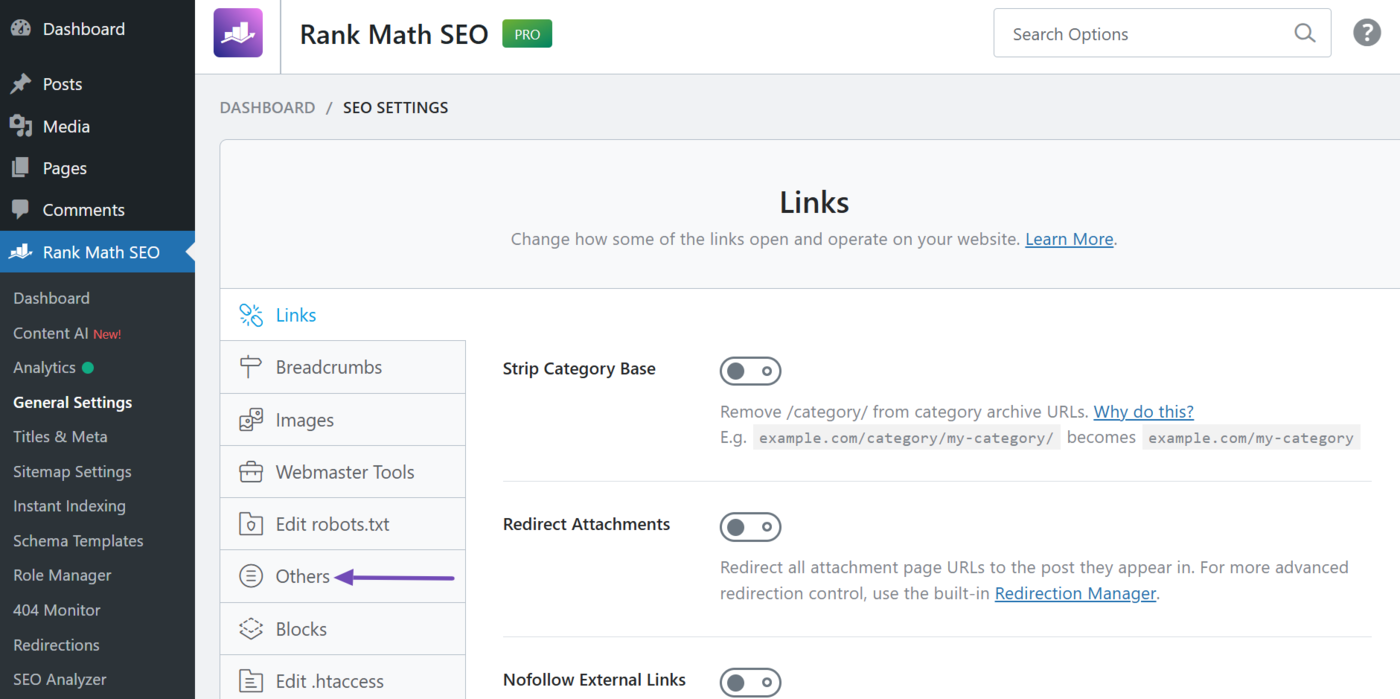
Then, scroll down and enable the Enable Search Intent Möglichkeit. Once done, scroll down and click Änderungen speichern.
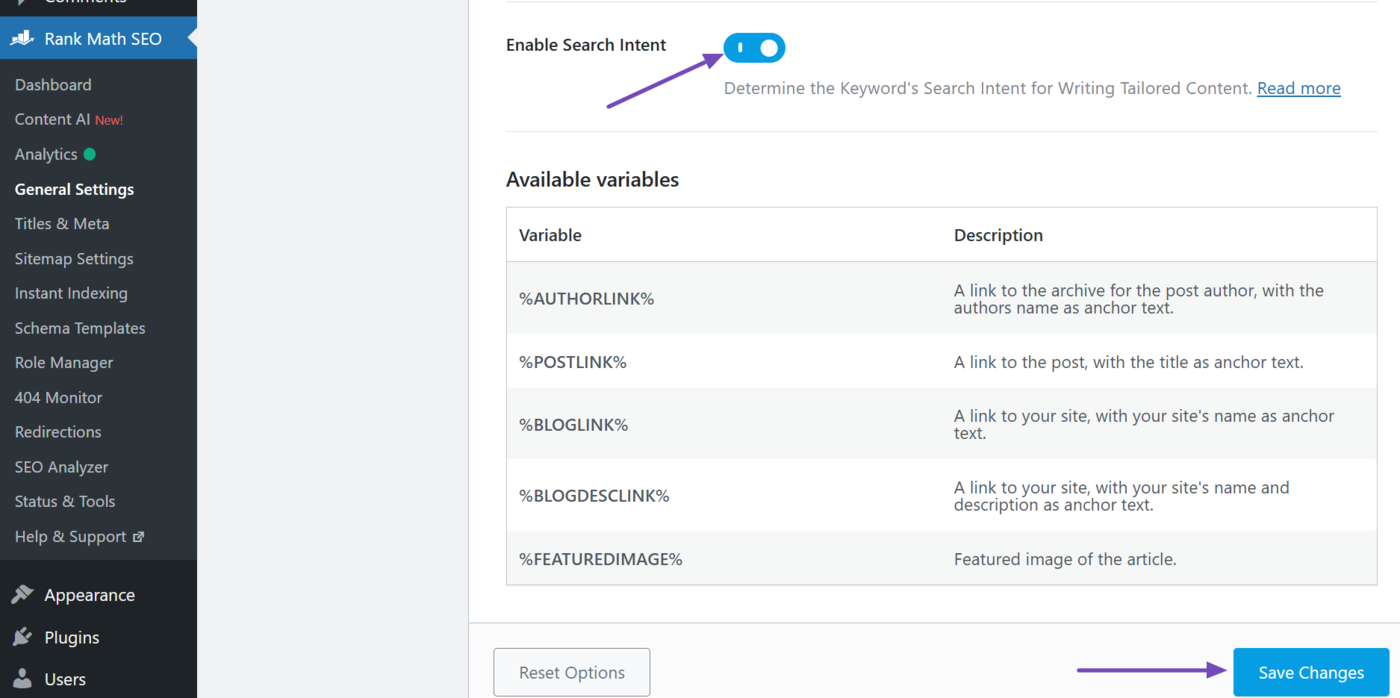
Now, hover over Beiträge oder Seiten und klicken Add Post oder Add Page, depending on which one you clicked.
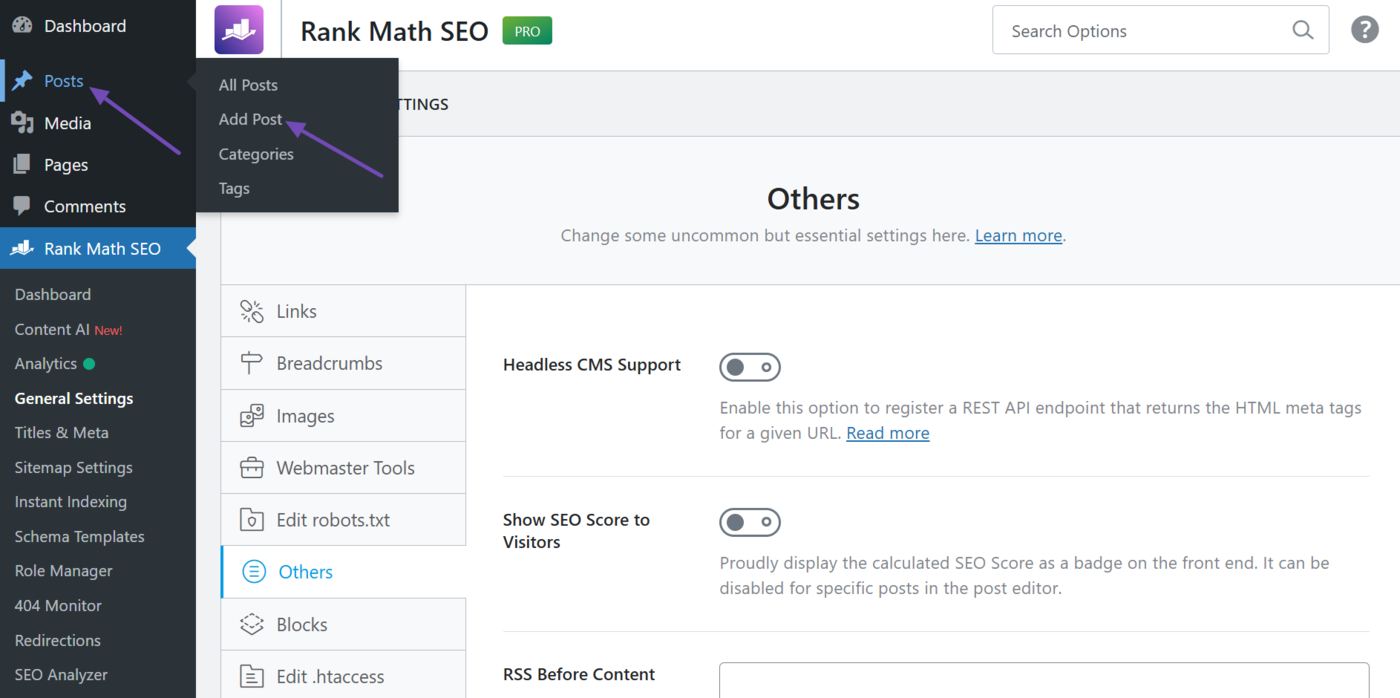
On the Posts or Page editor screen, click the Rank Math-SEO icon.
![]()
Then, navigate to the Fokus-Schlüsselwort field and enter your primary keyword. Once done, click the Suchabsicht icon, as shown below.
![]()
Rank Math will analyze your keyword and return its search intent. Hover over the icon to review it.
![]()
3 Select a Primary Focus Keyword
At this point, you should have a series of keywords categorized by their search intent. These are your keyword clusters, and the keywords in each cluster will be used to create new content or optimize an existing one.
However, you will choose one of the keywords as the primary keyword while the rest will be secondary. This is where search volume and keyword difficulty come in. Unless you are a highly authoritative site, you want to rank for keywords with high search volume and medium difficulty.
So, select the keyword with the appropriate search volume and difficulty as your primary keyword and use the rest with moderate difficulty as your secondary keywords.
4 Uncover the Type of Content to Create
Once you have concluded on a focus keyword, review it to know the type of content that ranks for that keyword. To do that, search for the keyword on Google and review the top six to ten results returned for the query.
The type of results returned will give you an idea about the sort of content searchers expect to find. For example, a quick search for ‘image resizer’ returns multiple tools for resizing images.
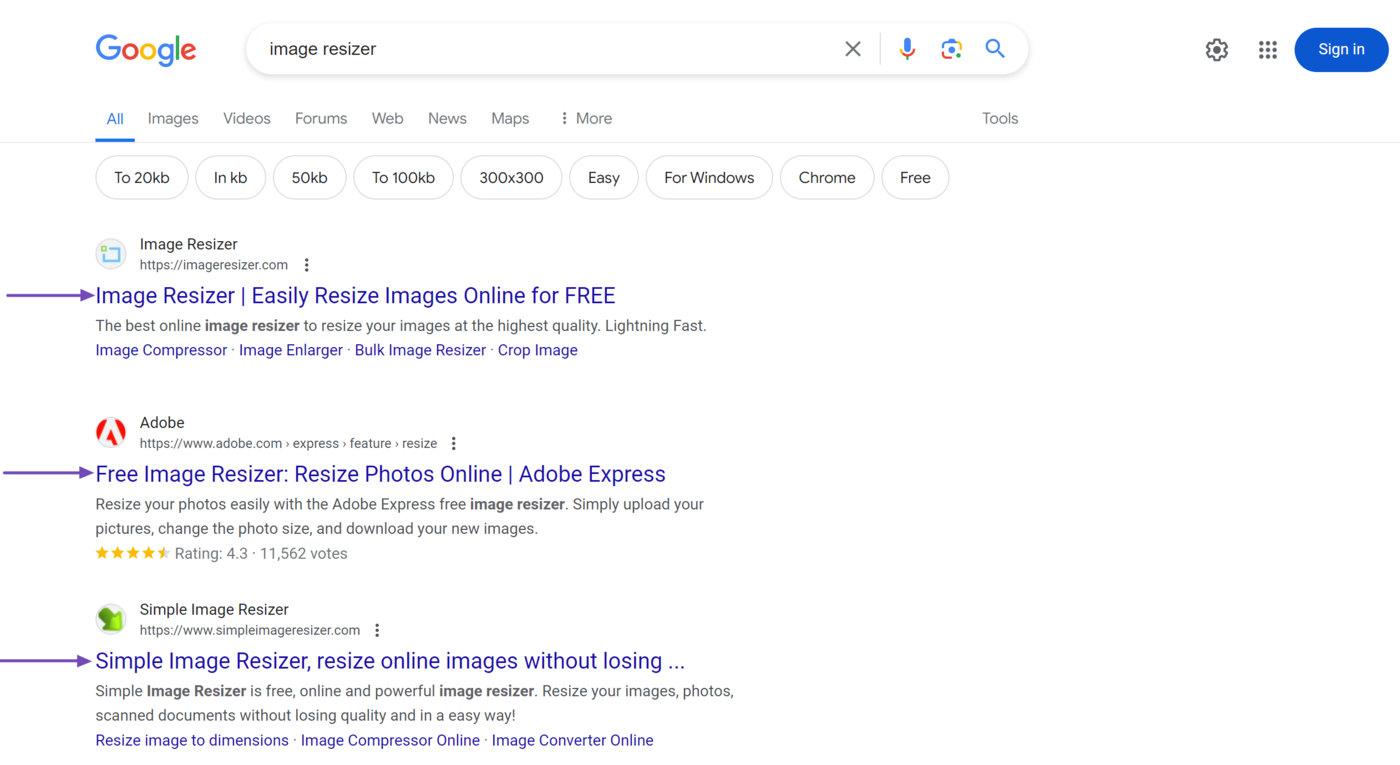
In this case, searchers expect to find an image-resizing tool and not a blog post. If you create a blog post about resizing images, you will likely struggle to rank for the keyword.
That said, the content you discover using keyword clustering will typically become pillar pages. They will be authoritative, provide in-depth insights into a topic, and link to other related content that provides in-depth information into specific parts of the topic.